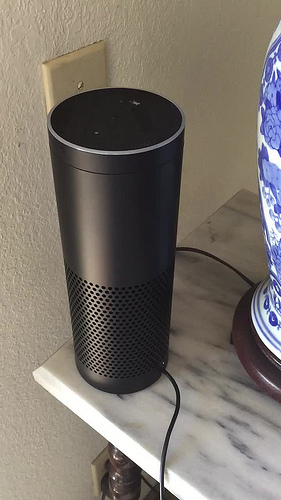A Detailed Look at Amazon’s ($AMZN) Institutional Ownership
Institutional investors currently hold around $260 billion or 64.2% in Amazon [stckqut]AMZN[/stckqut] stock.
Look at its top three institutional owners. Vanguard Group Inc owns $21.44 billion in Amazon.com, Inc., which represents roughly 5.26% of the company’s market cap and approximately 8.25% of the institutional ownership. Similar statistics are true for the second largest owner, Price T Rowe Associates Inc, which owns 20,919,431 shares of the stock are valued at $17.84 billion. The third largest holder is Fmr Llc, which currently holds $16.49 billion worth of this stock and that ownership represents nearly 4.05% of its market capitalization.
At the end of 12/31/2016 reporting period, 984 institutional holders increased their position in Amazon.com by some 14,465,876 shares, 724 decreased positions by 23,425,019 and 164 held positions by 266,929,329. That puts total institutional holdings at 304,820,224 shares, according to SEC filings. The stock grabbed 219 new institutional investments totaling 3,835,622 shares while 136 institutional investors sold out their entire positions totaling 3,989,532 shares.
Multiple company employees have indulged in significant insider trading. Amazon.com, Inc. disclosed in a document filed with the US Securities and Exchange Commission (SEC) that Director RYDER THOMAS O has sold 4,000 shares of Amazon.com, Inc. in trading session dated Mar. 01, 2017. These shares are worth $3,408,880 and were traded at $852.22 each. The SEC filing shows that ALBERG TOM A performed a sale of 590 shares. The Director disposed these shares by way of transaction on Feb. 21, 2017. The company’s shares were given away at $850 per share worth to an income of some $501,500 on account of ALBERG TOM A.Senior Vice President, Zapolsky David, sold 503 common shares of Amazon.com, Inc. in the open market. In a transaction dated Feb. 21, 2017, the shares were put up for sale at an average price of $850, raking in a sum of $427,550. After this sale, 2,523 common shares of AMZN are directly owned by the insider, with total stake valued at $2,153,179.In the transaction dated Feb. 15, 2017, the great number of shares disposed came courtesy the CEO Worldwide Consumer; WILKE JEFFREY A disposed a total of 4,890 shares at an average price of $840.06, amounting to approximately $4,107,893. The insider now directly owns 70,653 shares worth $60,296,683.
Source: Amazon.com, Inc. (NASDAQ:AMZN): A Detailed Look at its Institutional Ownership | Post Analyst



 Here’s a less-than-exhaustive list of all the applications to which the principle of specialized computing has been applied: Artificial intelligence, image recognition, self-driving cars, virtual reality, bitcoin mining, drones, data centers, even photography. Pretty much every technology company that makes hardware or supplies it — including Apple, Samsung, Amazon, Qualcomm, Nvidia, Broadcom, Intel, Huawei and Xiaomi — is exploiting this phenomenon. Even companies that only produce chips for their own use, including Microsoft, Google, and Facebook, are doing it.
Here’s a less-than-exhaustive list of all the applications to which the principle of specialized computing has been applied: Artificial intelligence, image recognition, self-driving cars, virtual reality, bitcoin mining, drones, data centers, even photography. Pretty much every technology company that makes hardware or supplies it — including Apple, Samsung, Amazon, Qualcomm, Nvidia, Broadcom, Intel, Huawei and Xiaomi — is exploiting this phenomenon. Even companies that only produce chips for their own use, including Microsoft, Google, and Facebook, are doing it.

